Happy World Book Day!
No one loves a good children’s book more than your therapists at The Children’s Place. Books provide wonderful language learning opportunities and are also great for developing attention and listening skills, and visual perception skills. We want to invite you to take a peek into our TCP book bag! Find out what our favourite children’s books are and how we use them to work on a range of therapy targets!
 Amna: The Very Hungry Caterpillar
Amna: The Very Hungry Caterpillar
This beloved children’s book is a popular classic for good reason. It works on so many levels and offers a range of vocabulary categories from food and days of the week to numbers and colours. You can play sorting games by having your toddlers sort out the healthy and unhealthy food the caterpillar eats; you can ask a variety of wh-questions (What is your favourite food/fruit? Where did the egg start out? Why does the caterpillar have a stomach ache?); and you can have them recall all the fruits the caterpillar ate. The tiny holes in the fruits, draw little fingers to the bright and colourful pictures and can add an element of anticipation by looking through the holes and guessing what the caterpillar might eat next. Supplement the book with a caterpillar puppet and pretend play food and you can have your little chatty tots act out the book and re-tell the story. With all the ingredients to make this a favourite you’ll be reaching for time and again, this fun read will give your little ones their first insight into a science miracle – the biological life cycle of a butterfly! Happy reading! 🙂
 Amy: Blue Hat, Green Hat
Amy: Blue Hat, Green Hat
I love that this book is silly! It offers opportunities to practice colour words, clothing, body parts, and animals. I love that you can practice answering ‘what’ and ‘where’ questions. I have also paired this book with a craft to make a turkey, requesting for different body parts, and requesting for different clothing and colours of clothing. Have fun sharing this silly book with your little one, laughing, and saying, “Oops!”
Annie: Hop on Pop
From Fox in socks to One Fish, Two Fish, Red Fish, Blue Fish, Dr. Seuss books are certainly some of my “go to” books to use in therapy. One book that I particularly love to use is Hop on Pop.
This book can be used in many ways. It’s a great way to introduce young children to rhyme as each set of pages includes multiple rhyming words. I love reading the story and pausing to let the child guess what word it next or to brainstorm other words that rhyme with what we’ve just read. This book also includes other basic concepts that can be reinforced such as colour (‘red Ned’) and number (‘three fish in a tree’). Hop on Pop is a great book for introducing or practicing prepositions as it includes characters ‘falling off’ a wall, sitting ‘on’ various (rhyming) items and of course, two mischievous kids hopping ‘on’ poor Pop. While admittedly, this book may not be the best for development of narrative skills as each page is truly a surprise, the silliness of this book always captivates young listeners and in my opinion, is a must-have in any SLT’s ‘tool bag’!
Fatima: Where’s Wally
Where’s Wally is a must-have book in any family library. Children, and even adults, of all ages, enjoy spending time searching for Wally in the many intricately-detailed scenes. As a paediatric occupational therapist, I enjoy using this book with children to work on improving visual perceptual skills which are skills required to make sense of and interpret what we see. Having adequate visual perception is essential for school related tasks such as reading, writing, and math. It allows the child to recognise letters and numbers, and match shapes. In daily tasks, it allows the child to recognise faces, find toys in messy drawers/cupboard, and pay attention to details on the road. Where’s Wally also allows for the development of adequate visual scanning abilities and enables a child to plan a search strategy which is useful for any daily activity. Grab a book and begin your hunt for Wally!
 Meghan: Using books to practice speech sounds!
Meghan: Using books to practice speech sounds!
Reading books together is a great opportunity to practise any speech sounds your child is working on! For instance, while reading a book to your child, emphasise his/her sound each time it appears. This will provide good, adult models of the sound. You can also produce a few of the speech sounds incorrectly to see if your child will notice and correct you. With familiar books, you can pause and let your child fill in the word that uses his/her sound. Any book works well for these activities, but here is a good list of books separated by each speech sound: http://twomeyspeechtherapy.com/lib/pdf/Articulation-Books.pdf
Nicole: That’s Not my Dinosaur & The Foot Book
That’s Not My Dinosaur: I love that children can have fun not only looking at the pictures in this book but also get to feel different adjectives described! This one is my favourite out of a massive series because I love dinosaurs! This book series is never ending with pirates, vehicles and any animal you can think of just to name a few. You can be sure you will find something your child is interested in! These books offer repetition to help build an understanding of negation (e.g. not) and help to build your child’s adjectives (e.g. bumpy, fuzzy). The books are short and sweet and provide lots of fun things for your little one’s to touch, which can help keep your little one focused and wanting to read it over and over! Your child may also love to try to create their own That’s Not My… book!
The Foot Book: I just can’t get enough of Dr. Seuss’ books but The Foot Book is definitely one of my favourites! This book pulls children into Dr. Seuss’ crazy world of opposites. The book contains very simple vocabulary to teach basic concepts (e.g. right/left, day/night, high/low) but with Dr. Seuss’ repetitions and rhymes, it makes it a book you want to read over and over. Within sessions, we not only have fun reading through the book but also seeing if we can recreate the concepts with our own feet! For example, seeing how quick and slow we can make our own feet go. I also love how it has an underlying message implying the feet signify the many different types of people in life we meet and how they are all interesting to learn about! “In the house and on the street, how many different feet you meet!”
 Trisha: Brown Bear, Brown Bear, What do you see?
Trisha: Brown Bear, Brown Bear, What do you see?
Brown Bear, Brown Bear, What do you see?: I love the repetition in this book! It’s great for early language learners because it offers many opportunities to practice a variety of targets. I use this book to practice the pronouns “I” and “me,” (“I see a red bird looking at me!), to encourage the understanding and use of colour concepts in short phrases, and to teach animal vocabulary. The repetitive nature of the book is ideal for having children fill in the blanks as you read to them. The only words that change on each page are the colour and animal words and as a result children have multiple opportunities to practice multi-word phrases while only having to think of one or two new words! I love the version of the book with sliding doors because it adds an element of surprise, keeps little hands busy, and gives the opportunity to request ‘open’ as well!
We hope that you enjoyed your browse through our TCP book bag and we encourage you to cozy up with your little ones tonight and read one of these fantastic books! Have we left one of your favourite books off our list? Please share your favourite children’s book in the comments below!

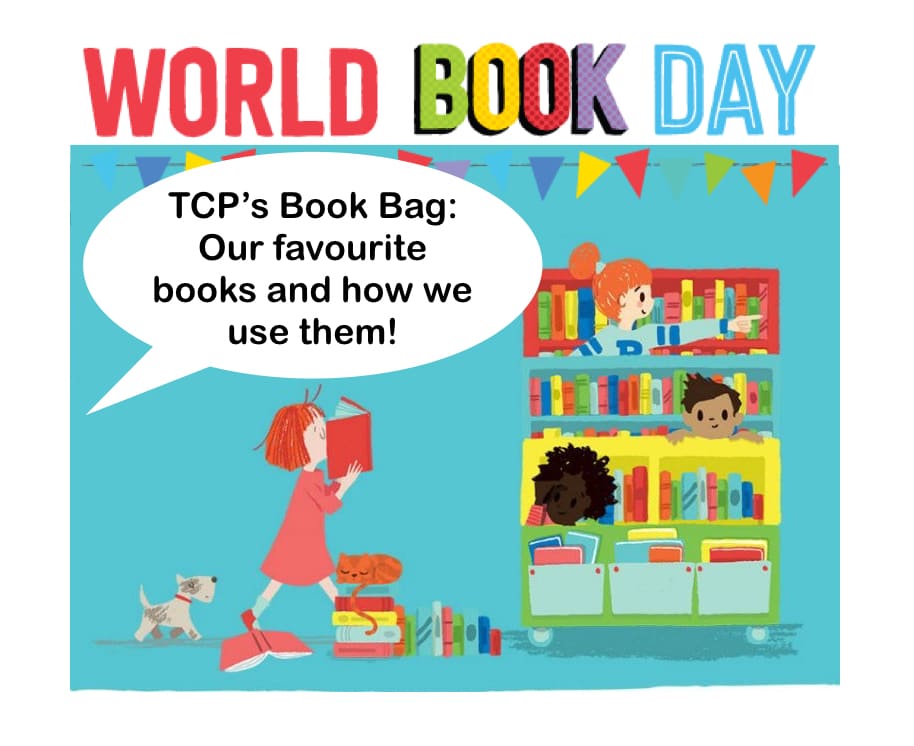

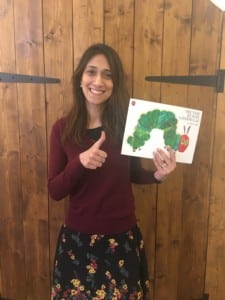 Amna:
Amna: 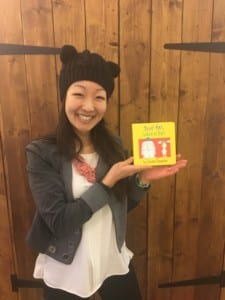 Amy:
Amy: 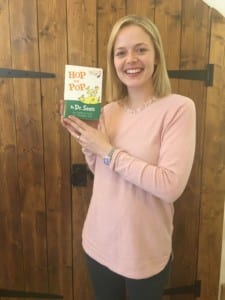
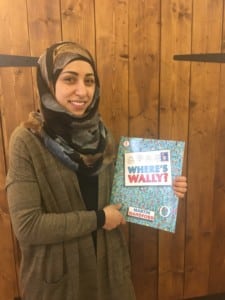
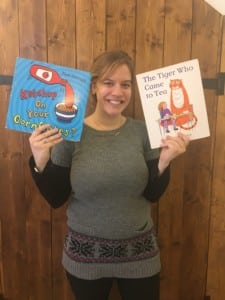 Meghan:
Meghan: 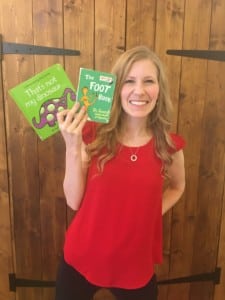
 Trisha:
Trisha:
Leave A Comment